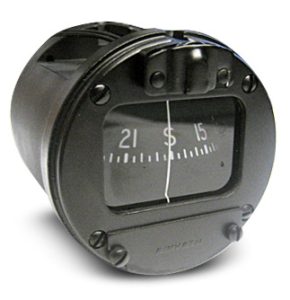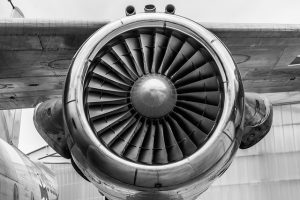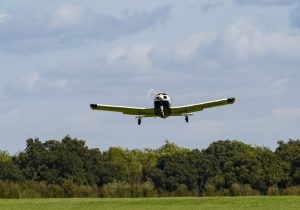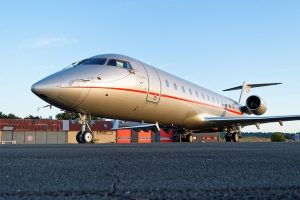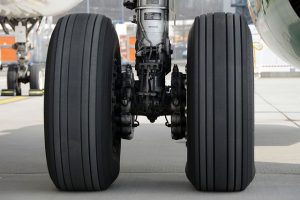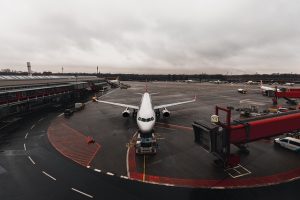
The field of aviation encompasses some rather confusing concepts, one of which is flight level. Many people assume that flight level is just another term used to describe an airplane’s altitude. While they both represent how high an airplane is, however, flight level and altitude aren’t the same. What is flight level in aviation exactly, and how does it differ from altitude?
Overview of Flight Level
Flight level is a measurement of an airplane’s altitude at standard air pressure. In aviation, it’s used for safety purposes. Airplanes relay their respective flight levels to other airplanes to minimize the risk of midair collision.
Flight levels consist of a number. This number reflects the altitude of an airplane — in hundreds of feet — at standard air pressure. As the name suggests, there are multiple “levels” of flight levels. All flight numbers occur in multiples of 500 feet. Each 500-foot block is a separate flight level.
Flight Level vs Altitude
While similar, flight level and altitude aren’t the same. Altitude represents the above-ground height of an airplane, whereas flight level represents the vertical distance of an airplane at standard air pressure.
Flight level indicates pressure. It’s independent of local atmospheric pressure and, instead, focuses on standard air pressure. Altitude, on the other hand, is more straightforward. It’s a measurement of an airplane’s height when flying.
Flight level and altitude essentially use different reference points. Flight level uses mean sea level as a reference point, whereas altitude uses local ground level as a reference point.
There are two primary types of altitude used in aviation:
- Indicated: The “true altitude” displayed on the airplane’s altimeter
- Pressure: Only displayed when the altimeter is set to the local barometric pressure
How Air Traffic Control Uses Flight Levels
Flight levels are used by air traffic control. In the United States, air traffic control is responsible for directing and routing air traffic. To ensure safe flights, air traffic control considers flight levels. Workers will check the flight leaves of airplanes in relation to other, adjacent airplanes. If two or more airplanes are on the same flight level, air traffic control may instruct them to change their altitude.
In Conclusion
Whether you’re a commercial or civilian pilot, you should familiarize yourself with flight levels. In aviation, flight levels provide insight into the height at which an airplane is flying at standard air pressure.
- SEO Powered Content & PR Distribution. Get Amplified Today.
- PlatoData.Network Vertical Generative Ai. Empower Yourself. Access Here.
- PlatoAiStream. Web3 Intelligence. Knowledge Amplified. Access Here.
- PlatoESG. Automotive / EVs, Carbon, CleanTech, Energy, Environment, Solar, Waste Management. Access Here.
- PlatoHealth. Biotech and Clinical Trials Intelligence. Access Here.
- ChartPrime. Elevate your Trading Game with ChartPrime. Access Here.
- BlockOffsets. Modernizing Environmental Offset Ownership. Access Here.
- Source: https://monroeaerospace.com/blog/what-is-flight-level-in-aviation/
- :is
- 200
- 300
- 500
- a
- adjacent
- AIR
- Airplane
- Airplanes
- All
- an
- and
- Another
- ARE
- AS
- assume
- At
- atmospheric
- aviation
- Block
- both
- by
- change
- check
- commercial
- concepts
- confusing
- considers
- control
- describe
- differ
- different
- directing
- displayed
- distance
- does
- each
- encompasses
- ensure
- essentially
- exactly
- familiarize
- Feet
- field
- flight
- Flights
- flying
- focuses
- For
- from
- Ground
- hand
- height
- High
- How
- How High
- However
- HTTPS
- Hundreds
- if
- in
- independent
- indicates
- insight
- instead
- into
- IT
- jpg
- just
- Level
- levels
- local
- many
- many people
- max-width
- May..
- mean
- measurement
- more
- multiple
- name
- number
- numbers
- occur
- of
- on
- ONE
- only
- or
- Other
- People
- pilot
- plato
- Plato Data Intelligence
- PlatoData
- Point
- points
- pressure
- primary
- provide
- purposes
- rather
- reflects
- relation
- Relay
- represent
- represents
- respective
- responsible
- Risk
- routing
- safe
- Safety
- same
- SEA
- Sea level
- separate
- set
- should
- similar
- some
- standard
- States
- straightforward
- Suggests
- term
- that
- The
- their
- Them
- There.
- they
- this
- to
- traffic
- two
- types
- United
- United States
- use
- used
- uses
- vertical
- vs
- What
- What is
- when
- whereas
- which
- while
- will
- with
- workers
- you
- yourself
- zephyrnet

